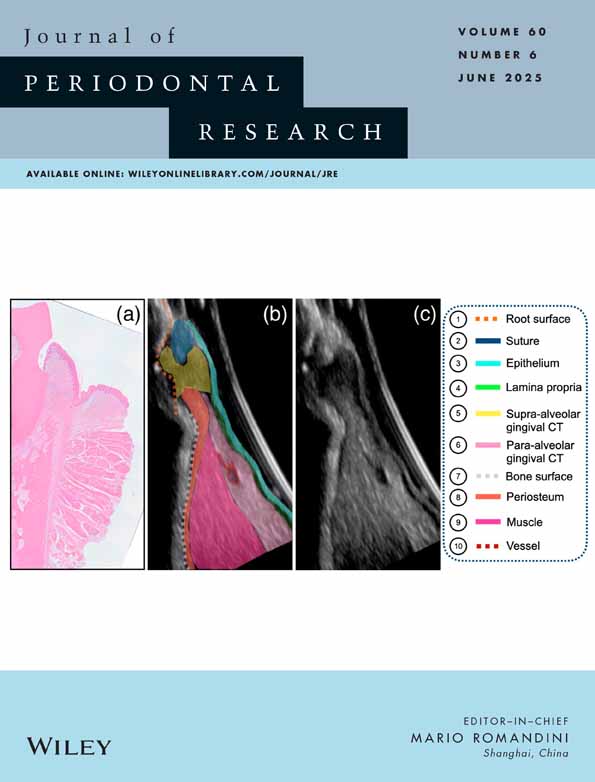Crevicular tissues as donor tissue for free gingival grafts
Limited human histologic observations
Abstract
Free gingiva grafts were placed into six facial sites having minimal width of attached gingiva in three adult patients. The donor tissue consisted of autogenous pocket lining which was surgically excised immediately prior to graft placement. Thus, the graft contained crevicular epithelium and adjacent corium which was placed into the recipient bed with the crevicular epithelium facing the oral environment. Three months post-operatively, all grafts appeared to have taken clinically. At this time, a slit biopsy was obtained from the graft site which included portions of the gingival margin and attached gingiva. Histologically, the graft area appeared different from attached gingiva. The epithelium showed evidence of parakeratinization. However, the cells appeared enlarged, the cellular layers less distinct and the entire epithelium was widened. The corium seemed less well organized than normally seen in attached gingiva. Since the donor tissue consisted of crevicular epithelium and adjacent corium, it would appear that the altered environment into which this tissue was placed affected its normal morphology.




